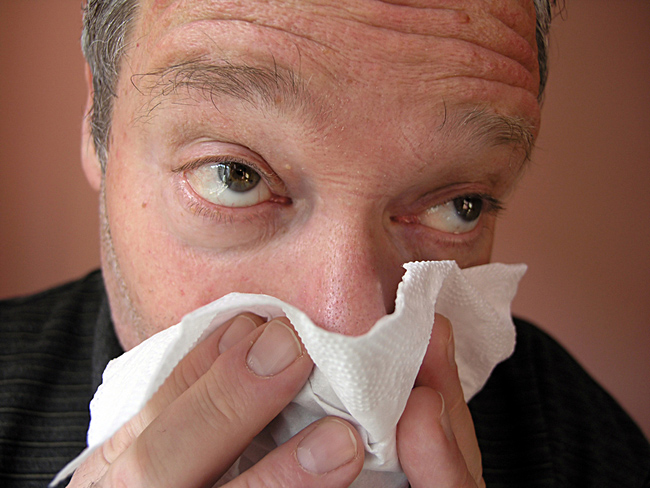Backyard Biodiversity May Stem Allergies

A decline in the variety of life — including the plants and animals that live around us, as well as the microbes on our bodies — may play a role in the rapid rise in allergies and asthma, indicates new research.
The study focused on a predisposition for allergies among 118 Finnish teenagers, finding links between a healthy immune system (the body's system for fighting disease), growing up in more natural environments and the presence of certain skin bacteria.
The results support the idea that declining biodiversity might be contributing to the rapid rise in allergies, asthma, and other inflammatory diseases, which include autoimmune disorders and some types of cancers in the developed world, said Ilkka Hanski, a research professor at the University of Helsinki.
This idea — that the diversity of living things, including microbes, in an environment contributes to the development of normal immune system function in children — is called the biodiversity hypothesis. It builds upon the hygiene hypothesis, a theory that suggests exposure to certain microbes early in life helps train our immune systems not to respond to harmless foreign substances like pollen.
The hygiene hypothesis attributes an increase in allergies to a lack of childhood exposure to microbes. Essentially, we have become too clean for our own good, it says. [Infographic: Germs Are Everywhere!]
The more scientists learn about the tiny things that share our bodies — living in our guts, on our skin and elsewhere — the more questions arise about these microbes' role in our health.
In this study, researchers examined the microbes living on the skin sample of 14 to 18 year olds living in eastern Finland nearly all of whom had lived in the same homes throughout their childhoods. They classified the environment within a 1.9-mile (3-kilometer) radius around the homes in which the teens had grown up, noting if it was, for example, forested, agricultural or built up, and surveyed the plants living in the yard, a proxy for boidiversity around the homes.
Get the world’s most fascinating discoveries delivered straight to your inbox.
They also analyzed blood samples from the teenagers for levels of an antibody, immunoglobin E. High levels are a sign of allergies, which occur when someone's immune system is overly sensitive to harmless substances, such as pollen. (Allergies trigger inflammation, which is part of the immune system's response to injury or invasion.) [Take the Allergy Poll]
The Finnish team found a web of connections among these three factors.
The skin of teenagers more prone to allergies had lower diversity of bacteria known as gammaproteobacteria than their healthy counterparts. (Gammaproteobacteria include the well-known gut microbe and some-time pathogen E. coli. They are not common skin bacteria, but frequently show up in soil and on plant surfaces.)
In fact, a particular group of gammaproteobacteria, in the genus Acinetobacter, appeared to be linked to higher levels of anti-inflammatory molecules among the healthy teens. Anti-inflammatory molecules help to quell allergic responses.
Environment also mattered. Teens living in more natural areas, as opposed to built-up ones, were less likely to have allergies and had more abundant gammaproteobacteria on their skin. A yard containing a diverse mix of uncommon, native flowering plants also appeared linked with healthy immune function. [5 Ways Climate May Affect Your Health]
These results raise plenty of questions, since it's still not clear why these relationships exist. For instance, it's not clear how gammaproteobacteria are connected to immune function. Likewise, exposure to a greater diversity of pollen from flowering plants may help children avoid allergies or, perhaps, the secret lies in the diversity of the microbes on the plants.
Writing in a study published online today (May 7) in the journal Proceedings of the National Academy of Sciences, the researchers suggest microbes in the natural environment influence those living on our skin, which, in turn influence our health.
"The hypothesis here is if you have generally more diverse environments, you have more diverse microbe communities, perhaps including more of the microbes that are particularly beneficial to us," Hanski said.
You can follow LiveScience senior writer Wynne Parry on Twitter @Wynne_Parry. Follow LiveScience for the latest in science news and discoveries on Twitter @livescience and on Facebook.
 Live Science Plus
Live Science Plus






